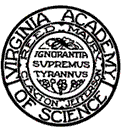
| Virginia
Journal of Science.
2001. Vol 52 (3) : 163-226 |
| Mammals
of Fort A. P. Hill, Caroline County, Virginia and Vicinity A. Scott Bellows1, 3, 1Conservation Management Institute, Department of Fisheries and Wildlife Sciences, Virginia Polytechnic Institute and State University, Blacksburg, Virginia 24061, Joseph C. Mitchell1, 2, 2Department of Biology, University of Richmond, Richmond, Virginia 23173, John F. Pagels 3, 3, Department of Biology, Virginia Commonwealth University, Richmond, Virginia 23284, Heather N. Mansfield 4, 4Environmental and Natural Resources Division, Fort A. P. Hill, Bowling Green, Virginia 22427 ABSTRACT
Fort A.P. Hill (APH) is a 30,329 ha military training
installation (U.S. Army) located in the upper Coastal Plain of Caroline
County, Virginia. It was formed in 1941 and named in honor of Civil War
Confederate Lt. General Ambrose Powell Hill. The current landscape
includes a mosaic of habitats that range from old fields to hardwood
forests. Forty species of mammals are known to exist on or near the
installation. These include one marsupial, five insectivores, 9
chiropterans, one lagomorph, 12 rodents, 10 carnivores, and one cervid.
We have studied many of the species on APH since 1997. In this paper we
describe the physical environment of the area and 7 important habitats
used by mammals. We also summarize the ecology and natural history of
each species and provide statistical summaries of original measurements
from mammals caught on the installation. The results of several recent
studies on APH allow us to describe habitat affiliations and relative
abundance of most of the mammals native to the mid-Atlantic region. Old
fields and clearcuts support a total of 20 species, including several
found predominately in this habitat. Pine stands and pine plantations
support the fewest number of mammal species (17) of any habitat on the
installation. Mixed pine and hardwood forests, hardwood forests, and
riparian forests support the largest number of species (29-36). With
the possible exception of pine plantations, the habitat mosaic found on
APH provides abundant resources for mammal communities. We also include
an evaluation of age and health attributes of the deer population and
describe the hunting program on the base. Number of deer harvested
annually 1985-2000 varied from 460 to 1765. Management activities since
1996 when the deer population exceeded carrying capacity have improved
herd health. Because much of Caroline County and eastern Virginia is in
extensive agriculture and the remaining hardwood forests are being
clearcut, APH is becoming a valuable habitat island for the mammalian
fauna of the upper Coastal Plain of Virginia and the mid-Atlantic
region. Key Words: Biotic Communities, Coastal Plain, Ecology, Hunting, Life History, Mammals, Management, Military, Natural History, Virginia. |